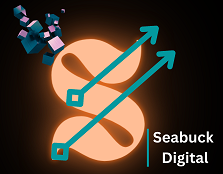
Introduction: From Word-for-Word to World-for-Understanding
Think of translation as photocopying text from one book into another language. Useful — but flat. Synthesis is more like becoming an editor who reads ten different books in different languages and writes a single, readable chapter that captures the core truth. Perplexity AI aims to be that editor. Perplexity AI Supported Languages platform doesn’t just convert words; it integrates evidence from multiple languages to produce a single, sourced answer. This is a great feature of Perplexity AI.
Why translation alone is no longer enough
Translation tools are great at converting wording, but they often miss cultural subtext, research nuance, and the varying angles different countries take on the same story. That’s a critical gap when your decisions depend on a 360° picture.
What we mean by “synthesis”
Synthesis = retrieval (find useful sources) + comprehension (understand them in context) + integration (merge insights into a coherent response) + attribution (show where each insight came from). That’s the big difference.
The Problem with “Stopgap” Translation Tools
Lost nuance and cultural context
A literal translation of a policy paper can miss legal distinctions or culturally specific terms that change the meaning. That’s why reading beyond the literal words matters.
Fragmented research: one language = one silo
If all your searches live in English, you’ll miss breakthroughs, critiques, and local reporting in other languages. That skews your view and can bias outcomes.
The Synthesis Advantage: How Perplexity Reunites Global Knowledge
LLMs + RAG = Synthesis, not just translation
Perplexity layers large language models with Retrieval-Augmented Generation (RAG). In practice that means it searches live web content in many languages, pulls up relevant passages, and uses the LLM to integrate the findings into a single answer in the language you request. The result is an answer grounded in actual cited sources rather than a decontextualized paraphrase.
Retrieval-Augmented Generation in plain English
RAG lets the model look up facts from real documents during generation. Imagine asking an expert who can instantly scan global libraries—RAG does the scanning so the model doesn’t have to rely only on what it “remembered.”
Why citations matter (and how Perplexity shows them)
Perplexity includes live citations, so every synthesized claim points back to the original article, study, or report. That transparency turns synthesis from a black-box guess into an auditable, research-friendly output.
Example workflow: French study + Japanese journal + English news → one answer
Ask about a global health intervention: Perplexity can fetch a French clinical trial, a Japanese methodology paper, and English media coverage, then synthesize the differences in outcomes and recommend next steps — all in your chosen language.
User Benefits: Why You Should Care
Expanded research scope—without hiring translators
Imagine running a literature review that includes Spanish, Mandarin, German, and Arabic studies — in minutes. You no longer need to assemble a multilingual team just to gather sources.
Balanced, cross-cultural viewpoints
Synthesis surfaces conflicting interpretations from different regions (e.g., how a policy is covered in U.S. vs. Chinese outlets), giving you a fuller, less parochial view.
Massive time savings and better decisions
Instead of translating, reading, then summarizing, you get an integrated answer with sources in a single step. That saves hours and reduces human error.
Perplexity’s Supported Languages: The Practical Snapshot
The language list is growing — and why that’s important
Perplexity’s platform supports many major languages and is actively expanding coverage — especially for European and regional languages as Perplexity partners with local organizations and builds localized models. Those initiatives aim to improve reasoning in languages that historically had weaker coverage.
Perplexity AI Arabic Language Support
Arabic language users are starting to see stronger support across both search and synthesis modes. Perplexity can now retrieve, understand, and summarize Arabic content alongside English or French sources, making it especially valuable for MENA researchers and businesses. This means users can query in Arabic, receive sourced answers, or even ask for synthesized summaries in English. With continuous improvements in dialect comprehension and local content retrieval, Perplexity is becoming a bridge for Arabic-speaking professionals who want global insight without losing their linguistic identity.
How Perplexity handles low-resource languages
For languages with less online data, Perplexity uses a mix of model techniques and partnerships (including localized model development and synthetic data generation) to improve retrieval and synthesis quality. This is a work-in-progress, but progress is active and prioritized.
Pro Tips: How to Maximize Multi-Lingual Synthesis
Prompting shift — what to ask instead of “translate”
Don’t say “Translate this paragraph to English.” Instead ask: “Synthesize the key findings from this Spanish paper and a related English news story; give the three main takeaways and list sources.” That instructs the system to integrate, not just swap words.
Querying strategy: mix languages in a single research session
Start with a question in English, ask Perplexity to search global coverage, then request the final summary in the language you prefer. Example: “Find reporting on this event in English, Arabic, and French and synthesize the divergent accounts into three bullet points in English.”
Use Focus Modes (Academic, News, Code) across languages
If your aim is scholarly, pick Academic/Research focus. If you’re checking current events, use News focus. The model’s retrieval strategy will adjust, hunting more appropriate source types across languages.
Real-World Use Cases
Academic literature reviews
Synthesize global studies on a narrow topic and surface methodological differences across regions.
Global market research and competitive intel
Pull product reviews, regulatory filings, and local press from several countries and compress them into a go-to-market brief.
Journalism and fact-checking
Compare reporting from different language outlets in near-real time to spot bias, gaps, or corroboration.
Limits and Responsible Use
When synthesis can still be biased or incomplete
Synthesis is only as good as the sources it can access. If certain outlets are behind paywalls or a language has little online presence, results will be skewed. Always treat synthesized outputs as a research starting point, not the final authoritative word.
Verify critical claims by checking the cited sources
Perplexity gives you the citations—use them. For legal, medical, or high-stakes decisions, open the source documents and, when possible, consult domain experts.
The Future: Localized Models & Better Coverage
Why partnerships and local models matter (EU, regional languages)
Perplexity has been working with regional partners and infrastructure providers to localize models and expand coverage into non-English languages—this improves accuracy and cultural sensitivity. The goal: make the “global knowledge unifier” actually global.
What better multilingual synthesis will unlock next
Faster global research pipelines, more inclusive scholarship, and better international policy analysis—without the current friction of language barriers.
Conclusion — Don’t Learn Every Language; Learn How to Synthesize
Translation taught us to move words across borders. Synthesis teaches us to move meaning. With Perplexity’s mix of LLMs, RAG, live citations, and growing language coverage, your research is no longer constrained by the languages you speak. Instead of hiring a translator for every new language, focus on designing smarter queries and evaluating sources. In short: stop translating line-by-line; start synthesizing insight-by-insight.
FAQs
Q1: Can Perplexity truly read and synthesize from any language?
A1: It can access and synthesize from many widely used languages and is actively expanding coverage—especially via regional partnerships and localized models—but ultra-low-resource languages may still have gaps. Always check citations for completeness.
Q2: How accurate is synthesized content compared to a human multilingual researcher?
A2: For many tasks, synthesis is fast and reliable because it cites sources. However, for deep domain work (legal nuance, clinical interpretation), a human expert remains important to validate and interpret findings.
Q3: Will synthesis remove bias from multilingual sources?
A3: Synthesis can reduce parochial bias by surfacing multiple viewpoints, but it doesn’t automatically remove bias. The AI’s output depends on the mix of sources it retrieves, so active source-checking is essential.
Q4: Should I still ask Perplexity to translate documents?
A4: You can, but you’ll get more value by asking for synthesis. Tell the tool to “synthesize findings” or “compare coverage” across languages rather than simply translating text.
Q5: Where can I see the sources Perplexity used for a synthesized answer?
A5: Every Perplexity answer includes numbered citations linking to the original sources—use those links to deep-dive into any claim.

